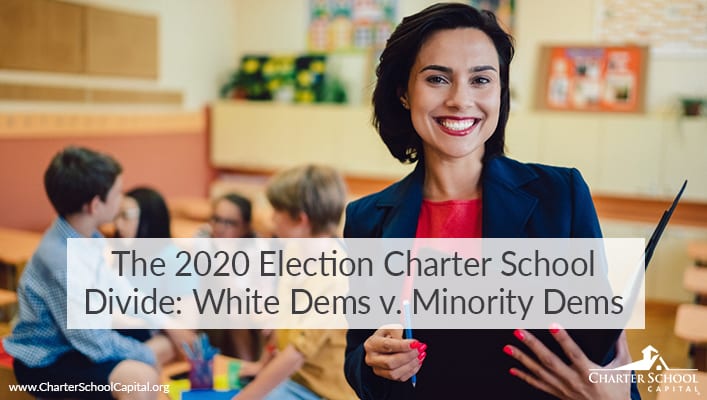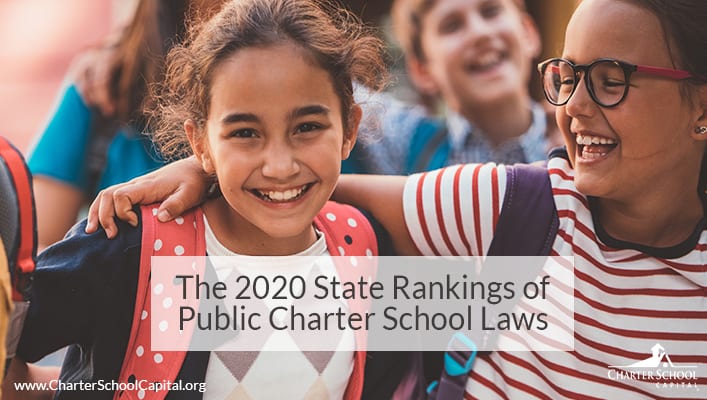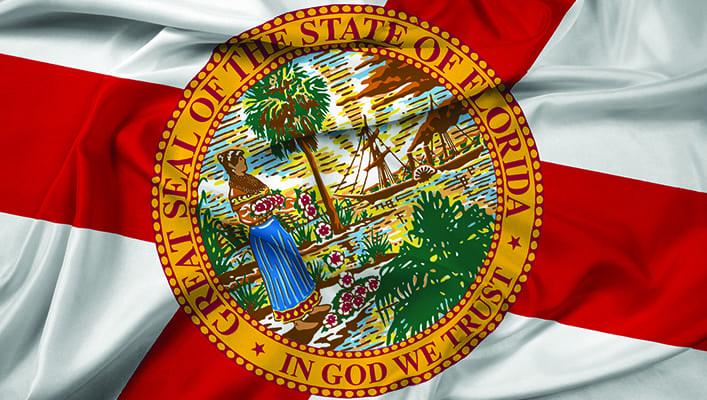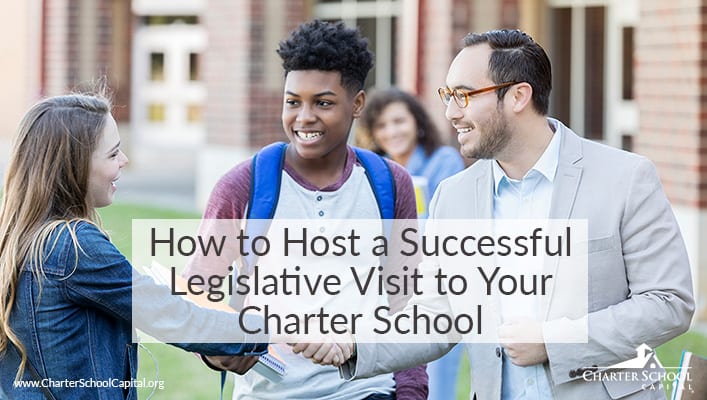
The 2020 Election Charter School Divide: White Dems v. Minority Dems
Editor’s Note: This article discussing the political charter school divide, was originally published here on May 23rd by the Washington Free Beacon and was written by Charles Fain Lehman, a staff writer for the Washington Free Beacon.
Across the U.S., the charter school debate rolls on. Democrats are often broadly painted as opponents to school choice. But the story is not nearly so simple. This article shows an evident divide between white democrats, who are more often against charter schools, and minority democrats, who are much more inclined to be in favor of charter schools and school choice.
We think it’s vital to keep tabs on the pulse of all things related to charter schools, including informational resources, and how to support school choice, charter school growth, and the advancement of the charter school movement as a whole. We hope you find this—and any other article we curate—both interesting and valuable.
Read the full article below to learn more about the racial disparity around the charter school divide.
White Dems Oppose Charter Schools; Minority Dems Support
New data shows likely fault line in 2020 primary
While Democrats are often thought of as opponents of school choice, new data show the story is not so simple: an examination of trends from 2016 through 2018 revealed that while white Democrats have grown staunchly opposed, their Black and Hispanic peers remain in favor of charter schools.
In an already hot 2020 campaign, charters have become targets for left-leaning candidates. Sen. Bernie Sanders (I., Vt.) in a speech Saturday called for an end to federal funding of for-profit charter schools, and a prohibition on funding of new charter schools, including not-for-profits. Sen. Elizabeth Warren (D., Mass.) sided with Sanders, calling for-profit charters in particular “a real problem right now.”
Sanders and Warren are, broadly speaking, in line with the majority view of their party. Education Next, a pro-reform journal, has polled Americans on their views on charter schools since 2013, providing detailed data on party breakdown since 2015. Their polls indicate that charters are consistently more popular with Republicans than with Democrats, and that the schools have slipped to being net unfavorable with the latter group in recent years.

However, this overall unpopularity hides a surprising trend within Democrats. Chalkbeat, an education news site, asked Education Next to provide it with racial decomposition of support for charters within Democrats. The results were startling.

Charter schools have enjoyed net support among Hispanic and Black Democrats for at least the past two years, the Education Next data indicate. But support has cratered among white Democrats. In fact, as of 2018, nearly twice as many (50 percent) of white Democrats opposed charters as supported them (27 percent).
The reason for the emergence of this racial disparity is unclear. Chalkbeat speculated that it may be because Black and Hispanic parents have more direct exposure to charter schools: The National Alliance for Public Charter Schools estimates that compared to regular public schools, public charters enroll more Black (27 percent versus 15 percent) and Hispanic (26 percent versus 22 percent) students.
It could also be because Black and Hispanic parents are more dissatisfied with their current school options. Chalkbeat pointed to a recent Pew poll finding that black voters tend to care about access to school diversity over local schooling, while white voters prefer the opposite, signaling that white respondents are happy with what they have while black respondents want better opportunities. (Hispanic and Asian parents were evenly divided.)
Regardless of the underlying cause, this divide over charter schools will likely prove important in Democratic politics in the near future. This is especially the case because, as recent research from the American Enterprise Institute shows, most figures in the “school reform” movement are Democrats. Notwithstanding broad Republican support for charters, conflict between major players in the school reform movement and their opponents is essentially an intra-party fight.
That fight will likely have consequences for the 2020 primary. Charter-opponent Sanders struggled to garner the support of black primary voters in 2016. His choice of “teachers unions over black voters,” as the Wall Street Journal framed it, may further cement his second-place status compared to front-runner Joe Biden (D., Del.), who has taken the lead among even younger black voters.
In fact, opposition to charters may have already cost Democrats not only votes, but at least one major election. Gov. Ron DeSantis’s (R.) narrow victory over Andrew Gillum (D.) in Florida’s 2018 gubernatorial election was partially thanks to a surprisingly high number of votes from Black women: 18 percent gave him their support, double the backing Sen. Rick Scott (R.) received.
The reason for this, William Mattox of the Marshall Center for Educational Options argued in the Wall Street Journal, was DeSantis’s support for school choice.
“More than 100,000 low-income students in Florida participate in the Step Up For Students program, which grants tax-credit funded scholarships to attend private schools. Even more students are currently enrolled in the state’s 650 charter schools,” Mattox wrote. “Most Step Up students are minorities whose mothers are registered Democrats. Yet many of these ‘school-choice moms’ vote for gubernatorial candidates committed to protecting their ability to choose where their child goes to school.”
DeSantis has responded to this signal: earlier this month, he signed a new school voucher program for low-income Floridians into law.
Data, meanwhile, continue to support the efficacy of charter schools over traditional public education. A recent study of Boston’s expansion of its charter program found that previously successful charters were able to “scale up,” serving more kids without losing any of their benefits to SAT scores and college enrollment compared to non-charter schools.
 California State Legislature: February 2020 Update
California State Legislature: February 2020 Update Since the company’s inception in 2007, Charter School Capital has been committed to the success of charter schools. We help schools access, leverage, and sustain the resources charter schools need to thrive, allowing them to focus on what matters most – educating students. Our depth of experience working with charter school leaders and our knowledge of how to address charter school financial and operational needs have allowed us to provide over $2 billion in support of 600 charter schools that have educated over 1,027,000 students across the country. For more information on how we can support your charter school, contact us. We’d love to work with you!
Since the company’s inception in 2007, Charter School Capital has been committed to the success of charter schools. We help schools access, leverage, and sustain the resources charter schools need to thrive, allowing them to focus on what matters most – educating students. Our depth of experience working with charter school leaders and our knowledge of how to address charter school financial and operational needs have allowed us to provide over $2 billion in support of 600 charter schools that have educated over 1,027,000 students across the country. For more information on how we can support your charter school, contact us. We’d love to work with you! The 2020 Ranking of Public Charter School Laws
The 2020 Ranking of Public Charter School Laws With the year ending, it is time to focus on where the 2020 California Legislature may go on charter schools next year. This year, we saw the passage of AB 1505 and AB 1507 which changed the way that charter schools will be approved and renewed. The bills also put major restrictions on non-classroom based charter schools including a two-year moratorium on their authorization. Finally, AB 1507 placed new limits on where these charters can locate and where they can have resource centers.
With the year ending, it is time to focus on where the 2020 California Legislature may go on charter schools next year. This year, we saw the passage of AB 1505 and AB 1507 which changed the way that charter schools will be approved and renewed. The bills also put major restrictions on non-classroom based charter schools including a two-year moratorium on their authorization. Finally, AB 1507 placed new limits on where these charters can locate and where they can have resource centers.




